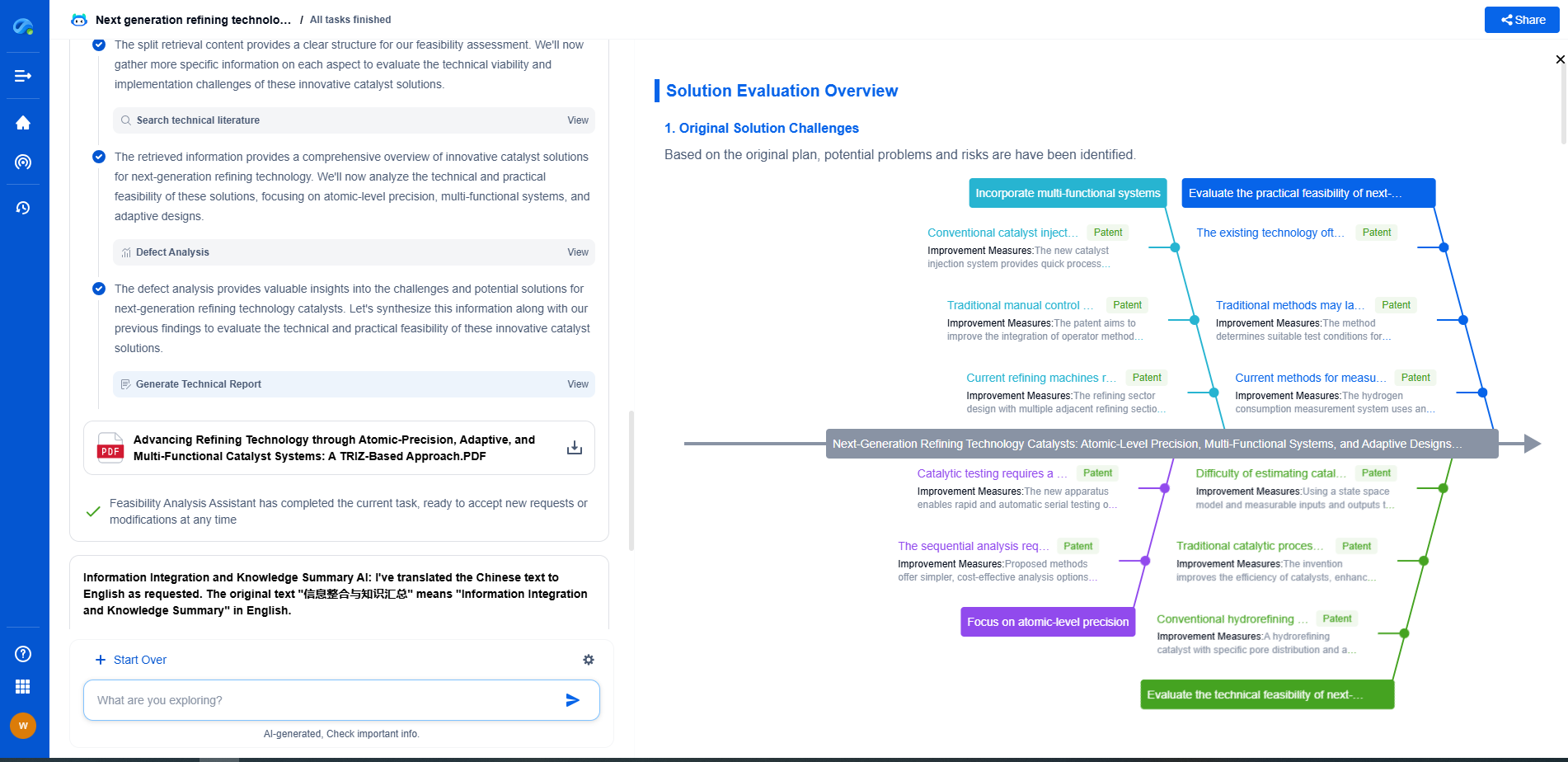Cloud-based robot control: Benefits and challenges
JUN 26, 2025 |
In recent years, the integration of cloud computing into robotics has opened up a new frontier in the field of automation and control. Cloud-based robot control provides a revolutionary approach to managing robotic systems, offering both substantial advantages and unique challenges. This article delves into the benefits and challenges associated with this emerging technology, providing insights into its potential impacts on industries and future developments.
Benefits of Cloud-Based Robot Control
Enhanced Processing Power
One of the primary advantages of cloud-based robot control is the access to vast computational resources. Robots are often limited by their onboard processing capabilities, which can restrict their ability to perform complex tasks. By leveraging cloud computing, robots can offload intensive processing tasks to remote servers, enabling them to handle more sophisticated algorithms and data-heavy applications like image recognition, machine learning, and real-time analytics.
Scalability and Flexibility
Cloud technology offers unparalleled scalability, allowing organizations to easily adjust their computational resources according to their needs. This means that businesses can rapidly scale their robotic operations without the need for substantial investment in new hardware. Moreover, cloud-based systems can be updated and configured remotely, providing a level of flexibility that is crucial for dynamic environments where changes are frequent.
Cost-Effectiveness
Deploying cloud-based control systems can be more cost-effective than traditional setups. By reducing the need for expensive and powerful onboard hardware, companies can lower initial investment costs. Additionally, the pay-as-you-go model of cloud services ensures that businesses only pay for what they use, optimizing operational expenses in the long term.
Improved Collaboration and Data Sharing
The cloud facilitates easier sharing and collaboration among multiple robots and systems. Data collected by one robot can be instantly shared with others, promoting collective intelligence and improving overall system efficiency. This feature is particularly beneficial in complex operations such as search and rescue missions, where robots need to work in tandem and share vital information in real time.
Challenges of Cloud-Based Robot Control
Latency Issues
A significant challenge in cloud-based robot control is the latency associated with data transmission between robots and cloud servers. Real-time applications demand minimal delays, but network latency can hinder performance, especially in scenarios requiring instantaneous responses. Overcoming this obstacle often requires the development of edge computing solutions, which process data closer to the source.
Security Concerns
Transmitting data over the cloud introduces potential security vulnerabilities. Cybersecurity threats like hacking, data breaches, and unauthorized access pose significant risks to robotic operations. Ensuring robust encryption protocols, secure authentication mechanisms, and regular security assessments are essential to safeguarding cloud-based systems.
Dependence on Network Connectivity
Cloud-based systems are heavily reliant on stable internet connections. Any disruption in connectivity can severely impact the functioning of robots, leading to downtime or operational failures. This dependency makes it crucial for businesses to have redundancy plans and backup systems in place to mitigate potential connectivity issues.
Data Privacy and Compliance
As robots collect and process vast amounts of data, ensuring compliance with data privacy regulations becomes a critical concern. Organizations must adhere to local and international laws regarding data protection, which can vary significantly across regions. This requires careful planning and implementation of data governance strategies to ensure compliance while optimizing operations.
Conclusion
Cloud-based robot control stands at the intersection of robotics and cloud computing, offering transformative benefits that can drive innovation and efficiency in various industries. However, the challenges it presents must be carefully managed to fully realize its potential. As technology evolves, addressing issues such as latency, security, and connectivity will be pivotal in harnessing the power of the cloud for robotic applications. With ongoing advancements and strategic planning, cloud-based robot control has the potential to revolutionize the way we interact with and deploy robotic systems in the future.
Ready to Redefine Your Robotics R&D Workflow?
Whether you're designing next-generation robotic arms, optimizing manipulator kinematics, or mining patent data for innovation insights, Patsnap Eureka, our cutting-edge AI assistant, is built for R&D and IP professionals in high-tech industries, is built to accelerate every step of your journey.
No more getting buried in thousands of documents or wasting time on repetitive technical analysis. Our AI Agent helps R&D and IP teams in high-tech enterprises save hundreds of hours, reduce risk of oversight, and move from concept to prototype faster than ever before.
👉 Experience how AI can revolutionize your robotics innovation cycle. Explore Patsnap Eureka today and see the difference.
- R&D
- Intellectual Property
- Life Sciences
- Materials
- Tech Scout
- Unparalleled Data Quality
- Higher Quality Content
- 60% Fewer Hallucinations
Browse by: Latest US Patents, China's latest patents, Technical Efficacy Thesaurus, Application Domain, Technology Topic, Popular Technical Reports.
© 2025 PatSnap. All rights reserved.Legal|Privacy policy|Modern Slavery Act Transparency Statement|Sitemap|About US| Contact US: help@patsnap.com

